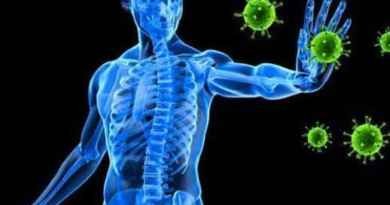Prostate Health : A Call to Pro-Active Awareness and Action
Ambar Bhattacharya, abptakmaa, Kolkata, 17th Sept 2020 : India has one of the world’s largest and fastest growing populations of aging men. While it is commonly known that men in this age group suffer from ailments like type 2 diabetes, high blood pressure and cholesterol, even cataract, the huge burden of morbidity imposed by a condition called benign prostatic hyperplasia or BPH – suffered by many of these very men, is largely unheard of by the public. BPH is an age-related enlargement of the prostate which creats an obstruction to the outflow path of urine, producing troublesome symptoms that leads to increased daytime frequency of urination, getting up frequently from sleep at night to pass urine, straining to improve weak stream of urine and feeling incompletely satisfied even after having just passed urine.
Research data from India show that almost 65% of men aged 40 years and above suffered from these annoying symptoms. Then why are most of these patient’s ‘unseen’?
According to DR NILANJAN MITRA, Consultant Uro-surgeon, DESUN HOSPITAL, “Most of these patients ‘normalize’ their symptoms, as an inevitable consequence of aging often quoting examples of their father, uncles, elder brothers and other male friends, relatives and acquaintances or attribute it solely to external factors like cold weather and their drinking too much water. They continue to suffer symptoms in silence and develop various strategies to cope with them until they markedly worsen, and complications develop. Only then do they approach a doctor”
According to DR NILANJAN MITRA, Consultant Uro-surgeon, DESUN HOSPITAL, “The patients suffering from BPH are always on the look-out for washrooms wherever they go – a behavior called toilet mapping, passing urine every time they go outdoors or retire to bed, cutting down on fluid intake more than needed and ultimately, not venturing out of doors or on long trips at all – either for socializing, work or even pleasure. This mostly happens due to embarrassing involuntary leakage of urine onto their garments (medically termed as incontinence) which occurs due to the inability to postpone severe urge to urinate – medically termed as urgency.”
In addition, if untreated, other problems like recurrent acute urinary retention (sudden painful inability to pass urine), recurrent urinary infections, formation of stones and even damage to and failure of both kidneys can soon set in. These not only impose an additional morbidity on the patient but also mean additional cost burden of surgery on the patient and his family. In many cases, the problem cannot be remedied by surgery and the patient may need to be put on lifelong catheterization or even dialysis.
Diagnosis of BPH is made by a mixture of physical, radiographic examinations and a few lab tests. Physical examination includes DRE (digital rectal examination), which involves a physical examination of prostate is important to screen it from palpable prostate cancer. Abdominal and pelvic ultrasound also indicates the size of the prostate gland. Lab tests include PSA (Prostate-specific antigen). PSA is a protein that is made only by the prostate. When the prostate is healthy, very little PSA is found in the blood.
By the adoption of healthy lifestyle and behaviours as well as cost-effective medications, the management of BPH is possible. Further, surgical removal of prostatic tissue is the last step if symptoms are uncontrolled or if complications like infections, stones, kidney damage etc. develop.It is indeed unfortunate that even in today’s day and age, where we have a host of effective and safe drugs and surgical techniques for patients with all kinds of limiting conditions, many patients still continue to suffer in silence, frequently approaching the doctor first only after they have landed into complications.
The first step in this direction is to create an awareness on this condition and the availability of the treatments. It is not ‘normal’ that any aging male must accept and suffer prostate problems as a part and parcel of aging. This September, as we observe the Prostate Health Awareness Month, let us take an opportunity to create awareness on men’s health. Men usually tend to ignore their health and this awareness month is intending to provide easily accessible prostate health information via www.whatarelief.in – a digital asset created for patient awareness and education. To know more about the symptoms and treatment, visit the website. Remember, leaving it untreated could lead to more troublesome complications, imposing a heavier dual burden of morbidity and cost on the patient and his family. Publicity : Launcherz.


